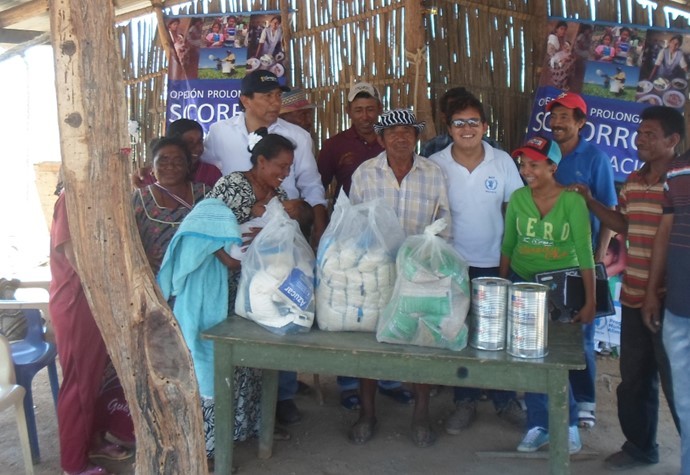
July 2015—In 2013, Viviana* and her family were in survival mode. Continuous drought and the ongoing effects of armed conflict were taking a heavy toll on her rural Colombian community, limiting access to potable water and harming agricultural and grazing activities, the main sources of income in the area.
With a limited source of animal protein and an almost complete lack of fruits, vegetables, tubers and dairy, she was struggling to meet her family’s food and water needs, and resorted to reducing the frequency and portion sizes of meals. Sadly, her story is not unique.
Viviana’s community, like most in La Guajira, is comprised of mainly indigenous people living in poverty and working to survive in conditions beyond their control. Internal conflict and territorial fighting among illegal armed groups, combined with severe effects from the drought, have exacerbated food insecurity and worsened living conditions in this northernmost area of the country.
Food shortages in 2013 affected nearly 510,000 people, and at least 20,000 cattle died. But with assistance from USAID and its partner the U.N. World Food Program (WFP), hope is beginning to return to La Guajira.
In 2013 and 2014, Viviana’s family received emergency food rations from WFP, funded by USAID’s Office of Food for Peace. While she participated in complementary self-care workshops, her children, like others throughout La Guajira, received critical intervention from de-worming and vaccination programs. Interventions like these help kids thrive by increasing food consumption, improving the ability to digest nutritious foods, and reducing the risk of disease, leading to happier and healthy lives.
USAID and WFP also worked with families to restart their livelihoods. Viviana and some of her neighbors began taking part in WFP’s food-for-work and food-for-training programs, helping them to access different sources of income until the next harvest season. They participated in recovery activities like craft production, and received training on how to market these crafts and optimize water resources for agriculture.
As a result, Viviana and other women in her community have created a revolving fund for handicraft production, thanks to seed capital acquired from their recent sales. The money earned allows them to participate more actively in the economy.
“Many of us feel more independent now that we are able to sell our own products. I also have more time to look after my children and take care of my mother,” said Viviana.
The struggle is not over, but life is getting better. Despite the prolonged drought and effects of armed conflict and fight for territorial control in the area, the people of La Guajira have tools that make them even more resilient than before. Viviana’s family and community have more sustainable livelihoods and improved food and nutrition security.
And the rains are coming back, giving even more hope for the future.
In fiscal year 2014, USAID provided nearly $5.8 million in food assistance to WFP in Colombia, and reached over 41,000 beneficiaries.
*Last name not available.
LINKS
Follow @USAID_Colombia, @USAIDFFP, on Facebook







Comment
Make a general inquiry or suggest an improvement.